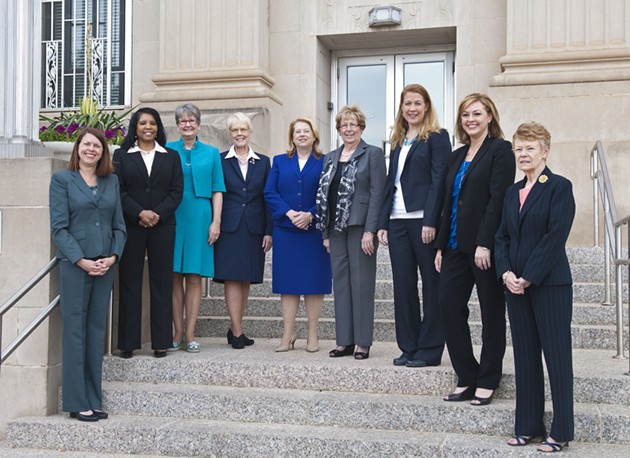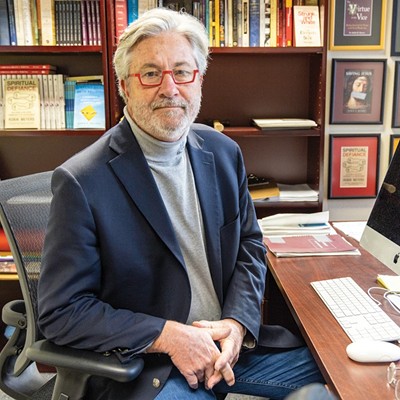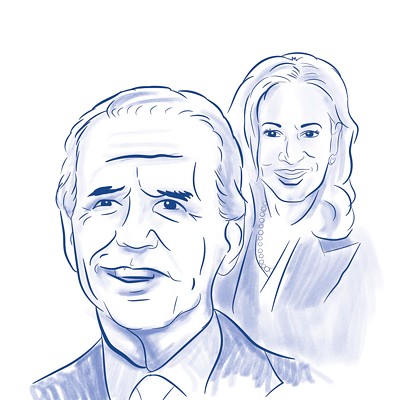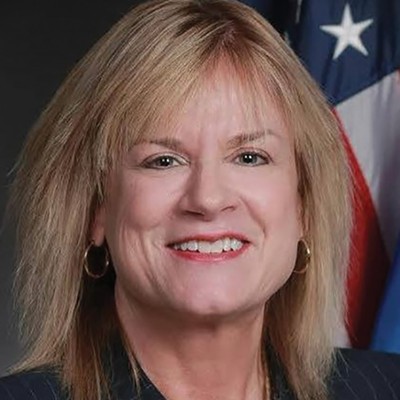
Compared to other city halls in the region, Oklahoma City’s has the most cracks in its glass ceiling.
Thirty-three percent of the city’s department heads are female. And while that might not seem like a lot, it’s a better rate than Dallas, Tulsa, Kansas City, Wichita and Little Rock, all of which are below 25 percent. OKC also has a higher rate than local suburbs Edmond and Yukon.
“We want the most qualified person for our jobs,” said City Manager Jim Couch.
“But if that person is a woman, I think that’s a bonus.”
Couch, who oversees the hiring of the city’s department directors, said diversity is something he pays attention to at City Hall. He was proud to learn about the city’s rate, which was calculated by Oklahoma Gazette.
“It’s always been a focus of mine,” Couch said about diversity among employees. “When I was director of water utilities, I had six division heads, and four were minorities and two of them were women. I was really proud of that.”
Couch recently hired a man and a woman when filling two department head openings at City Hall. Doug Kupper was hired as the new parks and recreation director last month, and Aubrey Hammontree was named the city’s planning director after serving in an interim basis.
Also, many of the female directors have worked their way up at City Hall, which indicates an atmosphere in which advancement is open to candidates of both genders.
“[Oklahoma City] is a great employer because you can move up and move around,” said Jane Abraham, the city’s community and government affairs manager. “Employee development for either men or women seems to be based on your abilities. I’ve never felt discriminated against being a woman.”
Abraham’s first position with the city was as a business manager in the fire department. She later moved to the finance department before entering her current position, where she monitors legislative issues that impact the city.
“It’s been just a great place to work,” Abraham added. “I’ve always felt opportunities were just as open to me.”
Dianna Berry, another female director, oversees the city’s human resources department and said her experience over the past 30 years at City Hall leads her to believe the city is a diverse employer.
“Oklahoma City is probably one of the most diverse employers,” Berry said. “We encourage that diversity. We recruit from various segments of the community, and it is a very friendly and welcoming place for females.”
In the quest for employment equality, advancement is one objective while salary is another. In Oklahoma, women make 77 cents for every dollar a man earns, according to the National Partnership for Women & Families.
At City Hall, the average salary for male department heads is $143,656, according to data requested by Oklahoma Gazette. The average salary for female directors is $131,475.
In total, women account for 25 percent of the city’s 4,824 employees.
OKC’s rate of female directors leads the region’s major cities, but it is still a rather low number compared to men. Municipal government can be a male-dominated industry, Berry said, partly because some of the training necessary has not always been a focus for female students.
Some positions require engineering education, which has traditionally been more sought out by men, according to Marsha Slaughter, the city’s utilities director.
“Working in utilities is typically a person with an engineering background,” said Slaughter, who has an engineering degree. “Around 20 percent of the practicing engineers today are women. But 20 years ago, it was 16 percent; and 40 years ago, it was a quarter of one percent.”
When asked about OKC’s acceptance of female leaders, Slaughter also remarked on the election of Patience Latting in 1971 as not only the city’s first female mayor but the first female mayor of a major American city with a population over 350,000.
“City Hall is asexual,” said Kristy Yager, the city’s public information and marketing director. “When I talk to other people in other business environments, I hear about sexual harassment or some amount of that. I have never ever in my 17 years here seen that.”
Like many of the other female employees at City Hall, Yager said she feels the work environment is accepting of women because the top priority has been to hire talented workers.
“[Couch] hires people with very high standards and that have a good reputation,” Yager said. “We hire really good people, both men and women.”
Print headline: Women, power / OKC’s City Hall hires more females for leadership positions than comparative cities, including Edmond and Tulsa











